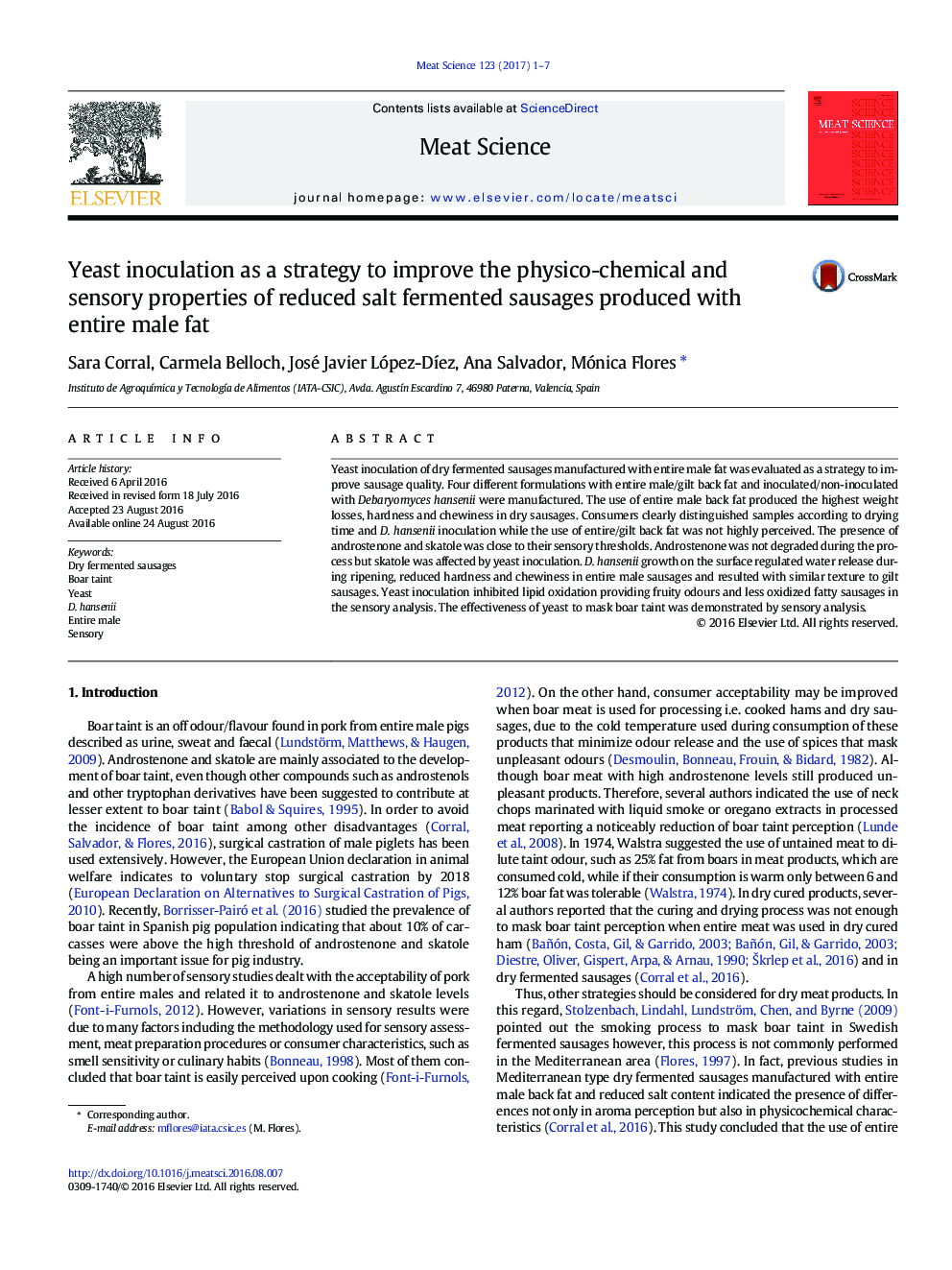| Article ID | Journal | Published Year | Pages | File Type |
|---|---|---|---|---|
| 2449283 | Meat Science | 2017 | 7 Pages |
•D. hansenii was inoculated in fermented sausages produced with entire male and gilt.•Androstenone was not degraded during fermentation process.•Skatole generation was affected by D. hansenii inoculation.•D. hansenii masked boar taint perception.•Drying time and D. hansenii inoculation affected consumer perception.
Yeast inoculation of dry fermented sausages manufactured with entire male fat was evaluated as a strategy to improve sausage quality. Four different formulations with entire male/gilt back fat and inoculated/non-inoculated with Debaryomyces hansenii were manufactured. The use of entire male back fat produced the highest weight losses, hardness and chewiness in dry sausages. Consumers clearly distinguished samples according to drying time and D. hansenii inoculation while the use of entire/gilt back fat was not highly perceived. The presence of androstenone and skatole was close to their sensory thresholds. Androstenone was not degraded during the process but skatole was affected by yeast inoculation. D. hansenii growth on the surface regulated water release during ripening, reduced hardness and chewiness in entire male sausages and resulted with similar texture to gilt sausages. Yeast inoculation inhibited lipid oxidation providing fruity odours and less oxidized fatty sausages in the sensory analysis. The effectiveness of yeast to mask boar taint was demonstrated by sensory analysis.
